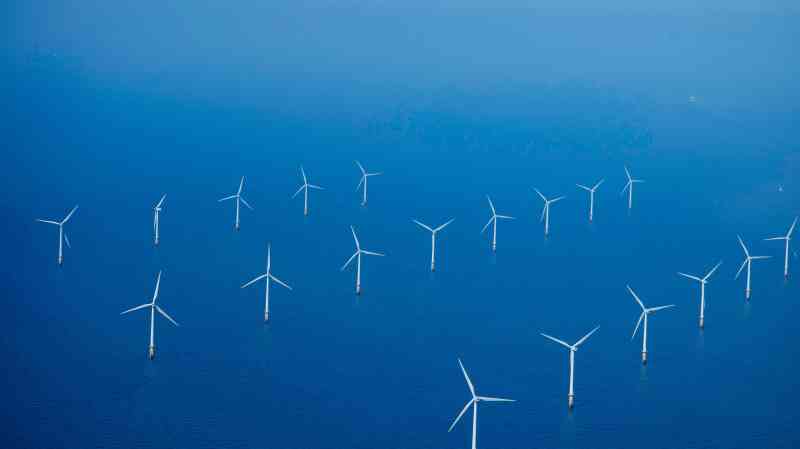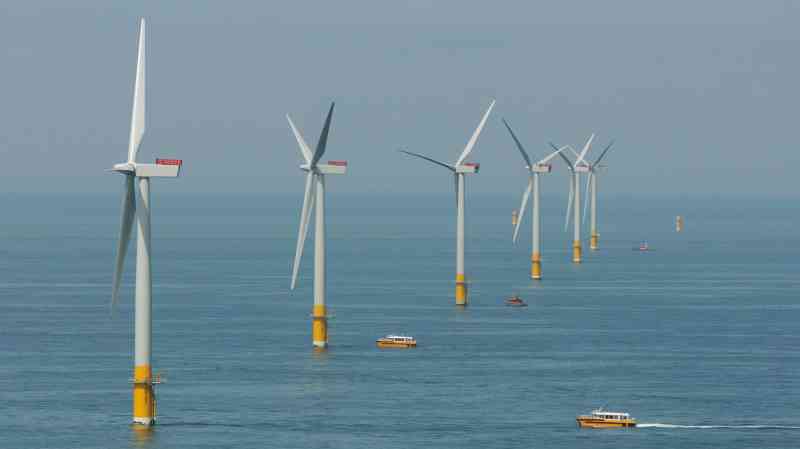Green light for an energy investment
There’s growth in green energy. When the SDCL Energy Efficiency Income Trust listed its shares in December 2018, it was worth £100 million. Fast-forward to today and it is worth more than £700 million and is a potential candidate for inclusion in the FTSE 250 in the next index reshuffle.
If there’s scepticism, too, about renewable energy — the bumper £900 million paid by BP for the option to build offshore two wind farms has prompted suspicions of a bubble in the market — the trust, more widely known as Seeit, claims to be different, the first investment company to focus on assets that reduce wasted power. Rather than buying into sprawling fields of wind or solar power generators whose earnings are exposed to wholesale prices, it invests in an array of energy ventures located almost exclusively at the places to which they are supplying power and with revenues are not linked to the grid.
Seeit’s portfolio is mainly in Britain, Europe and North America and its investments are managed by Sustainable Development Capital, which was set up in 2007 and specialises in energy efficiency and decentralised power generation. Among other things, Seeit provides LED lighting for the entire branch estate of Santander, the banking group, it is responsible for a combined heat and power generator at St Bartholomew’s Hospital in London and it provides rooftop solar panels for Tesco. In the United States, it generates recycled gas power for steel mills operated by ArcelorMittal, which has the added bonus of giving the trust carbon credits.
The trust seems to have accelerated its activities in recent months. In December, it spent $150 million buying solar and other energy storage projects in America from Blackstone, the private equity investor; and this month, it raised £160 million in a placing with shareholders that will give it additional firepower to pursue deals.
In many ways, Seeit is not like a conventional investment trust. It doesn’t have a reference index against which it benchmarks its performance, for example, which makes setting it in context more complicated. However, assessed by other measures it seems to stand up well. Over the six months to the end of September, pre-tax profit rose more than sixfold, from £2.3 million to £17.2 million. Its net assets generated a return of 4.8 per cent over the period and it has returned 7.3 per cent a year since it was listed, albeit that being only just over two years ago. According to analysts at Liberum, taken over the past 12 months the vehicle has returned a very healthy 9.9 per cent.
For the prospective shareholder, then, the underlying investment case is built not only on energy efficiency but also on energy cleanliness. In headline terms, there is good growth through acquisitions and its targeted annual dividend payout of 5½p provides a prospective yield of just over 5 per cent.
Any buyer would have to be comfortable about subscribing to very regular capital-raisings or risk being diluted. So far, though, its fundraisings have been very popular. The high amount of new shares that Seeit issues means that, although the size of the vehicle grows rapidly, the share price does not. However, the generous dividend yield and improvement in the underlying net asset value should compensate for the lack of capital growth.
Seeit’s shares, up ½p to 107½p yesterday, have much to commend them, particularly for the investor seeking income. For this particular observer, the trust’s environmental credentials provide an additional incentive and its rarity value marks it out. Invest for the long term.
Advice BuyWhy Growth business that is positioned to capitalise on rising interest in localised energy-efficiency ventures
Saga
As a recovery play, Saga looks like a pretty punchy bet. Even before Covid-19 shut down the travel industry, the specialist provider of cruises and insurance for the over-50s was finding life tough. High debts and an ailing share price, combined with products that were beginning to feel irrelevant to its customers, were making the company’s future look decidedly rocky.
Yet Saga is still here, even though cruises have been left high and dry for the best part of a year and insurance is selling less travel cover. Moreover, it would argue that it is primed for a recovery when it comes.
Saga was founded in 1959 and before it was listed on the stock market in 2004 was owned by private equity investors. Aside from its debts, Saga’s main problem has been that its prospective insurance customers have been getting better deals at price comparison websites, while holidaymaking over-50s were having more fun booking breaks through other operators.
Over several strategic rethinks, Saga has taken its insurance products to the premium end of the market and has brought a more modern approach to its travel division, including offering “experiences”. In insurance, there are modest signs of a turnaround, with its three-year fixed-price contract proving popular and underwriting profits being higher than expected. And there are flickers of hope in travel, too. Saga hopes to resume operations in May and it is encouraging that 69 per cent of cruise travellers whose breaks were cancelled because of the pandemic chose to rebook rather than claim a refund. The date might slip, given that Boris Johnson’s ban on international travel until at least May 17, but it’s a start.
Net debts, of £411 million halfway through last year, have been brought down to just above £270 million. Costs have been managed, as has the amount of cash burn in the tour business. Unsurprisingly, the dividend is on ice for the foreseeable future. The shares, up 2½p, or 0.9 per cent, at 301¼p, are valued at 5.3 times Investec’s forecast earnings for next year. They are too risky to buy, but owners should hang on for hopefully improved fortunes.
Advice HoldWhy Not compelling but it has a fighting chance






